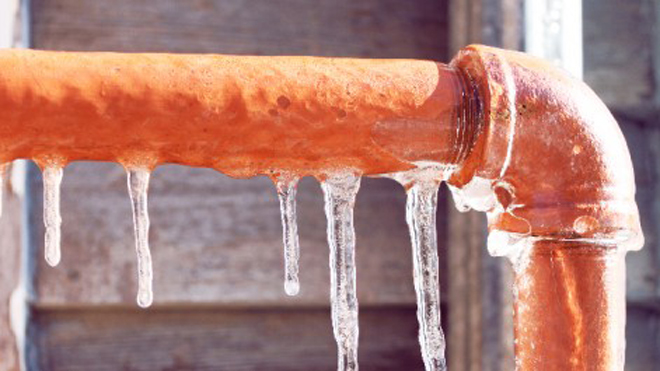Avoiding Frozen Pipes in Cold Weather: Pro Tips
Avoiding Frozen Pipes in Cold Weather: Pro Tips
Blog Article
What're your thoughts concerning How to Prevent Your Pipes From Freezing?

Cold weather can damage your pipes, particularly by freezing pipelines. Below's how to prevent it from happening and what to do if it does.
Intro
As temperature levels decrease, the risk of frozen pipes rises, possibly resulting in expensive repair work and water damages. Understanding how to stop icy pipelines is essential for house owners in cold climates.
Avoidance Tips
Insulating susceptible pipelines
Wrap pipes in insulation sleeves or utilize warm tape to protect them from freezing temperatures. Focus on pipelines in unheated or exterior areas of the home.
Home heating methods
Maintain interior spaces sufficiently heated, especially areas with plumbing. Open up cabinet doors to allow warm air to flow around pipelines under sinks.
How to identify frozen pipes
Seek reduced water flow from taps, unusual smells or noises from pipes, and visible frost on exposed pipes.
Long-Term Solutions
Structural changes
Take into consideration rerouting pipelines far from outside walls or unheated areas. Include added insulation to attic rooms, basements, and crawl spaces.
Updating insulation
Invest in top quality insulation for pipes, attics, and walls. Appropriate insulation helps keep consistent temperatures and minimizes the threat of icy pipes.
Safeguarding Exterior Plumbing
Garden pipes and exterior faucets
Detach and drain garden hose pipes before wintertime. Mount frost-proof faucets or cover outdoor faucets with protected caps.
Recognizing Icy Pipelines
What causes pipes to freeze?
Pipelines ice up when revealed to temperature levels listed below 32 ° F (0 ° C) for expanded durations. As water inside the pipes freezes, it expands, putting pressure on the pipeline wall surfaces and possibly triggering them to burst.
Risks and problems
Frozen pipelines can result in water supply disturbances, residential or commercial property damage, and costly repair services. Burst pipelines can flood homes and cause considerable structural damages.
Indicators of Frozen Piping
Determining frozen pipes early can stop them from bursting.
What to Do If Your Pipelines Freeze
Immediate actions to take
If you think frozen pipelines, keep faucets open up to eliminate stress as the ice melts. Make use of a hairdryer or towels taken in hot water to thaw pipelines gradually.
Verdict
Protecting against icy pipes needs positive steps and quick feedbacks. By understanding the reasons, indicators, and preventive measures, home owners can protect their pipes throughout winter.
5 Ways to Prevent Frozen Pipes
Drain Outdoor Faucets and Disconnect Hoses
First, close the shut-off valve that controls the flow of water in the pipe to your outdoor faucet. Then, head outside to disconnect and drain your hose and open the outdoor faucet to allow the water to completely drain out of the line. Turn off the faucet when done. Finally, head back to the shut-off valve and drain the remaining water inside the pipe into a bucket or container. Additionally, if you have a home irrigation system, you should consider hiring an expert to clear the system of water each year.
Insulate Pipes
One of the best and most cost-effective methods for preventing frozen water pipes is to wrap your pipes with insulation. This is especially important for areas in your home that aren’t exposed to heat, such as an attic. We suggest using foam sleeves, which can typically be found at your local hardware store.
Keep Heat Running at 65
Your pipes are located inside your walls, and the temperature there is much colder than the rest of the house. To prevent your pipes from freezing, The Insurance Information Institute suggests that you keep your home heated to at least 65 degrees, even when traveling. You may want to invest in smart devices that can keep an eye on the temperature in your home while you’re away.
Leave Water Dripping
Moving water — even a small trickle — can prevent ice from forming inside your pipes. When freezing temps are imminent, start a drip of water from all faucets that serve exposed pipes. Leaving a few faucets running will also help relieve pressure inside the pipes and help prevent a rupture if the water inside freezes.
Open Cupboard Doors
Warm your kitchen and bathroom pipes by opening cupboards and vanities. You should also leave your interior doors ajar to help warm air circulate evenly throughout your home.

Do you really like more info about 6 Ways to Prevent Frozen Pipes? Create a remark down below. We'd be pleased to hear your suggestions about this posting. In hopes to see you back again soon. Those who liked our blog post if you please do not forget to share it. We love your readership.
Click Here! Report this page